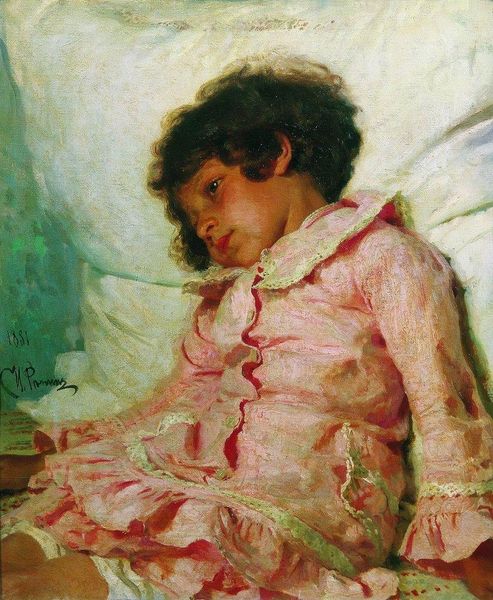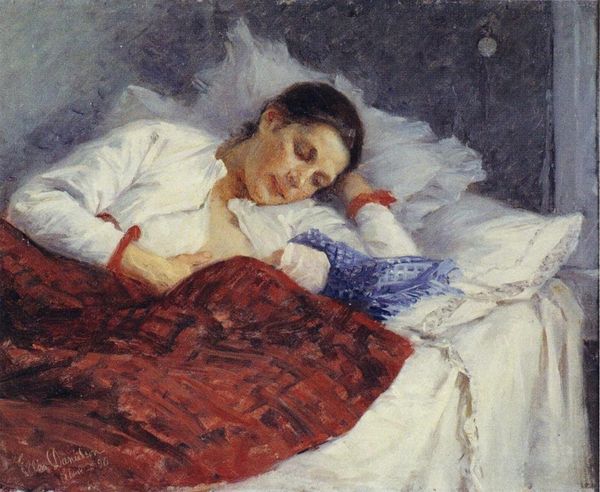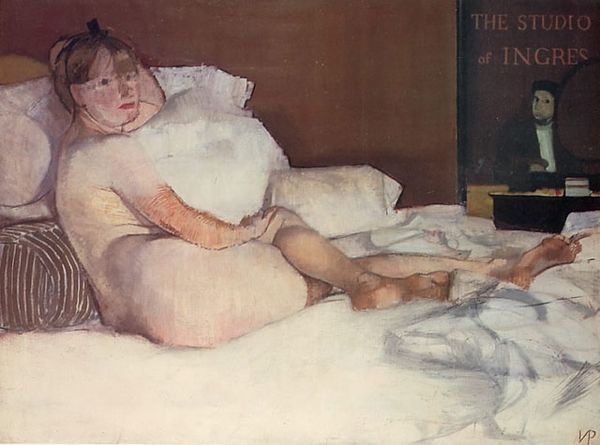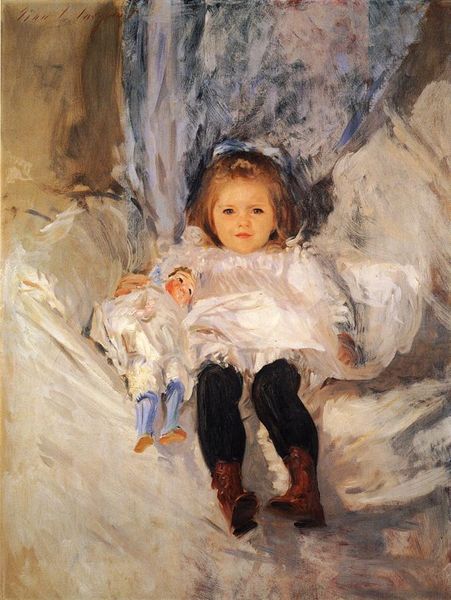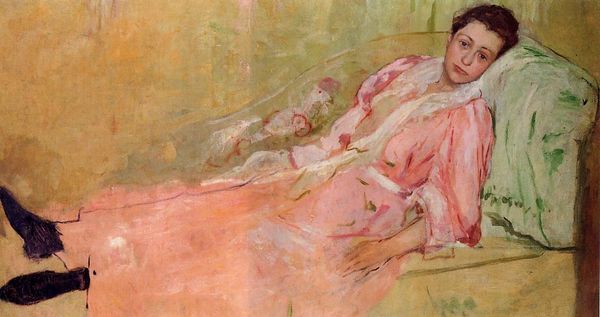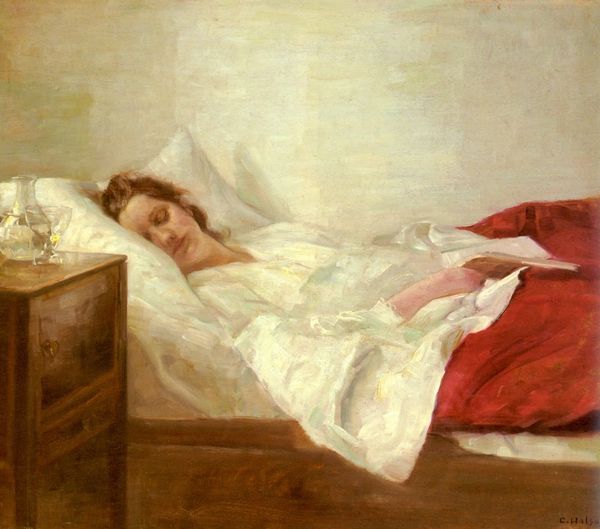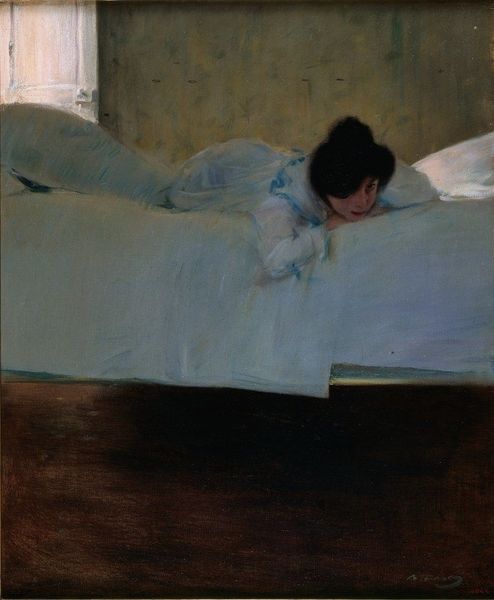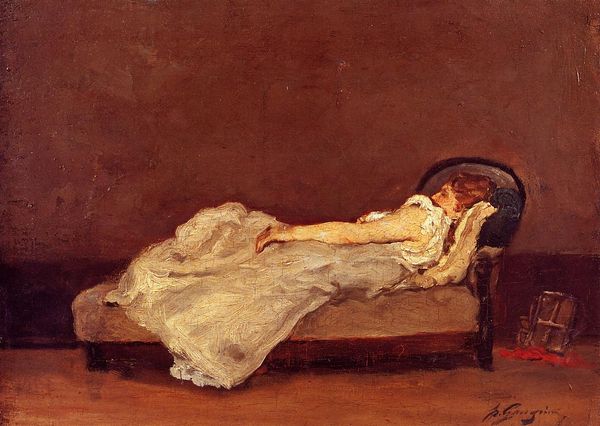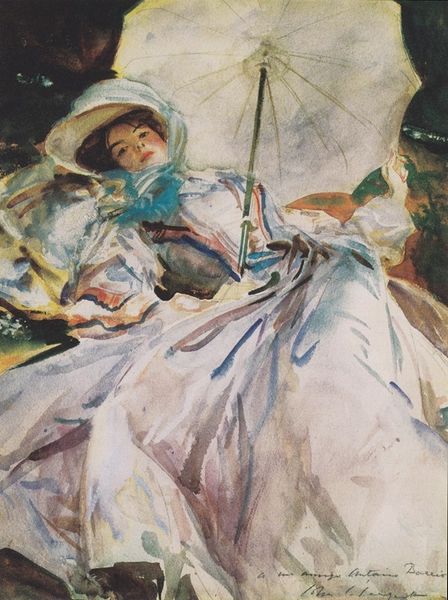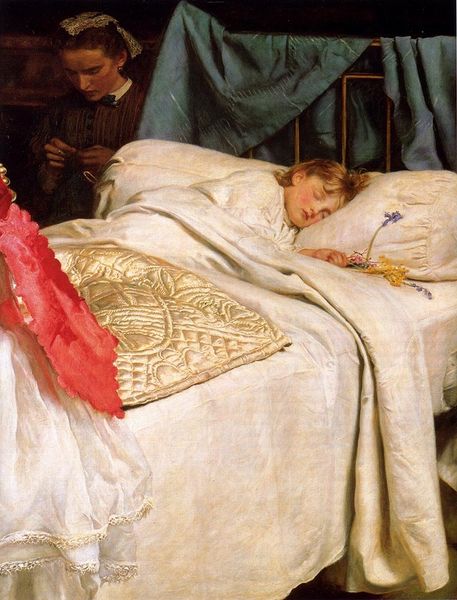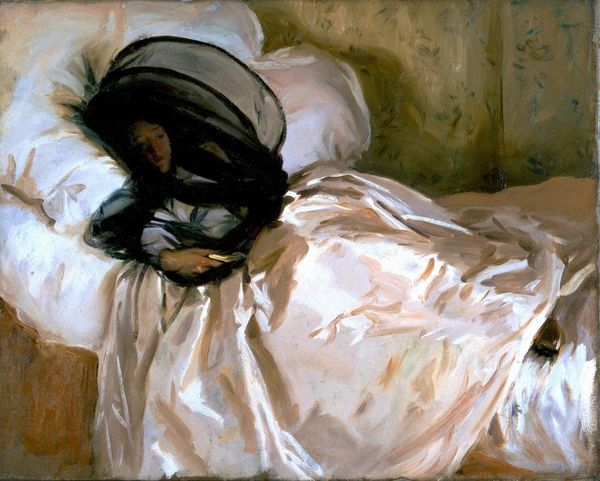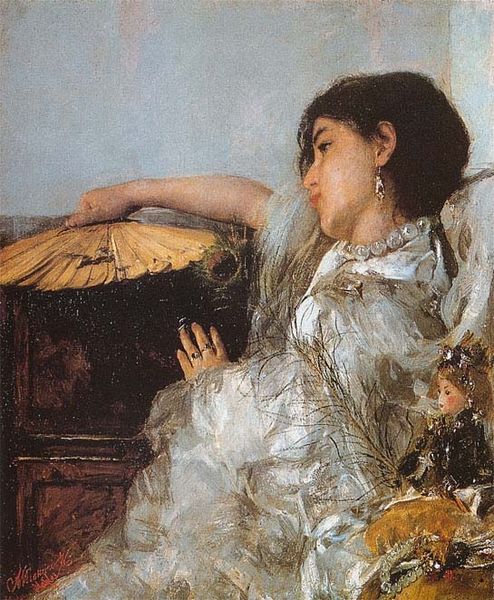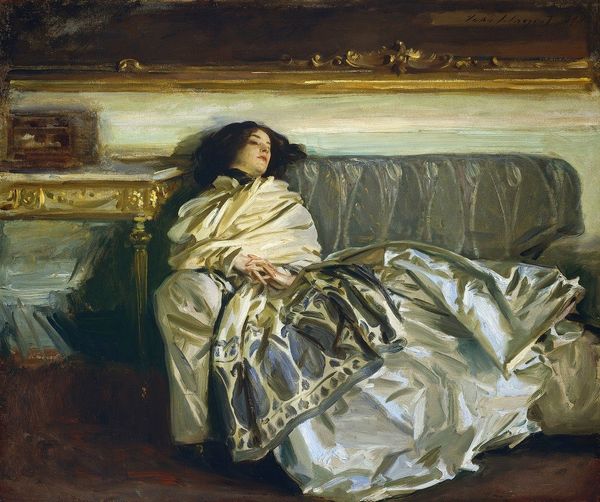
oil-paint, watercolor
#
portrait
#
impressionism
#
oil-paint
#
figuration
#
oil painting
#
watercolor
#
child
#
genre-painting
#
watercolor
Copyright: Public domain
Curator: John Singer Sargent painted "The Little Fruit Seller" in 1879. He renders the figure with the deftness of oil paint to create an informal portrait. What’s your initial take? Editor: Dreamy and melancholic. The diffuse light softens every edge, and the subject looks almost ethereally transported outside of space and time, her weary expression telling a whole story of economic hardship, of child labor, of forced maturation under capitalism. Curator: I agree about the evocative quality. Consider, the turban she's wearing resembles a halo, framing her face and drawing the eye upward. What might that choice invoke for viewers familiar with religious iconography? Editor: That is quite astute; I would also ask viewers to consider this: how does this allusion to the Virgin juxtapose, for instance, the labor and the material circumstances of the figure, perhaps even acting as a way for a male artist to sublimate that exploitation through what one may deem religious "symbolism". Curator: Absolutely, it’s fascinating to consider how the artist engages with both tradition and observation. Sargent uses an impressionistic approach, allowing the loose brushstrokes to describe form without prescribing details. The circular shape of the fruit in her hands reinforces that idea, reflecting the shape of her headdress, both suggesting abundance, and sacrifice. Editor: Yes, though the fruit, which are obviously the symbol of fertility and abundance, ironically reveal how the labor of the little girl who harvests or perhaps even plants them—and not hers through an exploitation scheme—provides for the upper classes, perhaps those very elite collectors of impressionist art. What are we even celebrating here? Curator: It is true that through painting, one creates another layer of engagement—even complicity. Yet that recognition isn't always absent of feeling. What do you make of her bare feet against the painted canvas, vulnerable and exposed? Is there something being offered in those feet, so directly pointing towards the artist and spectator? Editor: Absolutely! I do see the symbolism in those feet as marking the most abject social circumstances: their poverty is signaled there through her unsandaled status; however, the painting aestheticizes those exact conditions for a kind of elite art market "slumming". That's the historical challenge for a work like this—reconciling beauty with difficult truths. Curator: Indeed. Ultimately, a painting such as this gives viewers an opening to ask some very critical questions about our history. Editor: A crucial dialogue that remains very much ongoing.
Comments
No comments
Be the first to comment and join the conversation on the ultimate creative platform.
